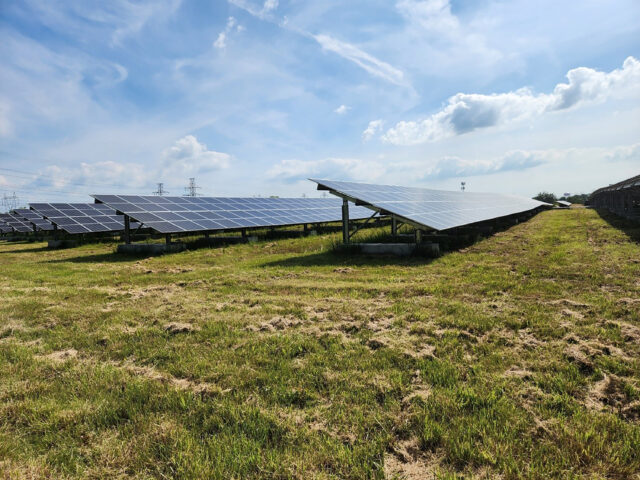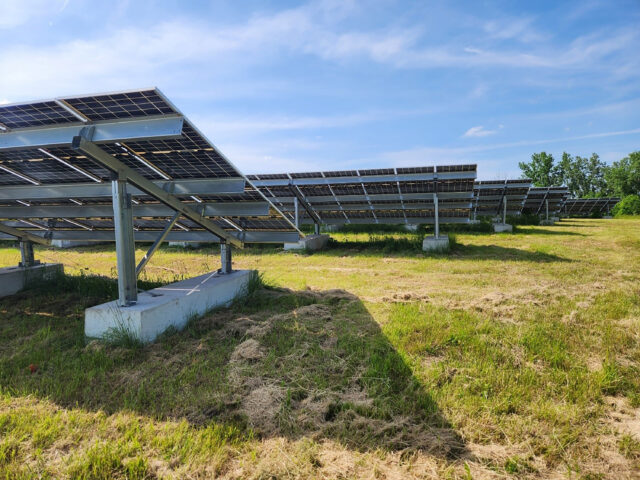From Waste to Watts: Solar Energy Development on Landfills and Contaminated Sites

Human activities have always had a major impact on their surroundings, and since the Industrial Revolution, modern development has resulted in environmental contamination and increased greenhouse gas emissions. Despite ongoing efforts to remediate these issues and curb emissions, many areas in the United States still bear the scars of past environmental harm. Evidence of this damage can be seen in landfills, Superfund sites, and brownfields.
As energy consumption increases, solar energy development has surged due to advancements in photovoltaic technology. This shift raises the question: can we convert these contaminated sites into opportunities for renewable energy production, thus addressing both environmental rehabilitation and sustainable energy demands?
Introduction to Landfills and Contaminated Sites
Landfills and contaminated sites have become commonplace reminders of human development. If you’re not familiar with these kinds of sites, here’s a quick introduction:
- Landfill: A site for disposing of various wastes, including municipal solid waste (MSW), construction and demolition (C&D) debris, industrial waste, and hazardous waste. Typically, these sites have soil covers and a range of engineering controls based on factors such as age, type of waste, and location. Landfills tend to be at least one or two acres in size, but often, these sites are significantly larger.
- Superfund Site: An area of land that contains environmental contamination of some form that exceeds state or federal standards and requires remediation under the Comprehensive Environmental Response, Compensation, and Liability Act (CERCLA). Superfund sites are remediated using federal money distributed to individual states for this purpose or by the party responsible for the contamination. These sites can vary in size, ranging from small locations like dry cleaner sites, transformer stations, and gas stations to large-scale projects such as the Hudson River cleanup in New York City.
- Brownfield Site: An area of land that contains environmental contamination of some form that exceeds state or federal standards and requires remediation. This remediation is conducted voluntarily by a third party not responsible for the site’s contamination, and this party is provided financial incentives in the form of tax breaks upon completing the remediation. Similar to Superfund sites, brownfield sites have a wide range of potential sizes.
These sites are generally not suitable for residential development and have limited commercial or industrial development potential, making them attractive for solar energy projects. They often have existing stormwater controls, require minimal tree clearing, do not use agricultural land, and tend to be close to electrical grid connections with supportive owners and communities. Redevelopment of landfills and contaminated sites for solar energy is a major priority for many states and the federal government, and attractive incentives are currently available.
Site Considerations
When considering whether a landfill or contaminated site is suitable for solar energy development, there are several factors that need to be evaluated:
- Status of Site: Has the site been properly remediated, covered, and closed? If the site was not properly closed, requires additional cleanup, or is under investigation for emerging contaminants (i.e., PFAS or “forever chemicals”), the site is likely not suitable for development at this time.
- Type of Contamination or Waste Present: What was disposed of at this site? C&D waste, non-hazardous industrial waste, and MSW are all suitable for landfill development. Hazardous waste landfills are rarely developed due to the nature of the waste they contain and the effects that cover failure would have if it were to occur.
- Presence of a Cover System: Many brownfield and Superfund sites utilize a soil cover system to contain residual contamination and prevent it from coming into contact with humans and the environment. Landfills are similar and generally have at least an engineering soil cover system to contain the waste and prevent water from entering them. If a cover system is present, any proposed development cannot compromise the integrity of the cover.
- Age of Waste: Landfill waste should ideally be at least 15 years old, preferably 30 years or older, to decrease the potential for differential settlement that could damage a solar array and increase the stability of the cover system.
- Slopes: Ballasted anchoring systems need to be placed on relatively shallow slopes to ensure that a solar array doesn’t slide or cause a cover system to fail. Typically, slopes that are steeper than 6H:1V (i.e., for every 6 horizontal units of distance, there is a 1 unit rise in vertical distance) are not suitable for solar development at these types of sites.
- Other Engineering Controls: Long-term monitoring, active remediation, and gas capture and treatment are all common at landfills and contaminated sites. These processes rely on groundwater monitoring wells, pump stations, and gas capture vents to continue operation. Since solar development is secondary to site engineering controls, a solar array design must allow access to these features at all times. Many times, this means that a solar array’s capacity is slightly reduced to allow wells, pumps, and vents to be accessible with heavy machinery.
- Distance to Interconnection: Finally, the distance to viable interconnection with the electrical grid is a key parameter for solar energy development. If a site is in a remote area or the local grid cannot handle additional electrical input, the costs associated with installing or upgrading electrical infrastructure are likely to be prohibitive to solar energy development.
Solar Energy Redevelopment Considerations
Landfills and contaminated sites that are feasible for solar energy development require designs that differ from traditional solar sites. When redeveloping a landfill or contaminated site, the solar array design must address the following items:
- Anchoring: Panels, racking, and electrical wiring are all traditionally anchored using driven posts at solar development sites. At landfills and contaminated sites, concrete ballasts (like those shown below) are typically used to anchor these components in place and prevent them from sliding and overturning.

- Slope Stability and Settlement: The added weight of using concrete ballasts raises concerns about potential settlement and the stability of slopes. Ballasts are designed to minimize ground pressure and may require geotechnical calculations to be conducted to ensure that these systems do not damage existing cover systems.
- Construction Techniques: Landfills, in particular, are sensitive to the weight exerted by wheeled vehicles. Tracked construction vehicles are generally used to construct solar arrays on contaminated and landfill sites to decrease the pressure exerted on cover systems and reduce the chances of forming ruts.
- Timing of Construction: Perhaps the most important consideration is choosing the right time to construct a solar array to avoid damaging an existing cover system and engineering controls. Construction is best suited for drier times of the year and should be avoided during wetter months. Placing ballasts in the winter comes with its own challenges, as frost heave can displace ballasts and impact array construction.
- Recycling of Panels and System Decommissioning: Solar panels have a typical lifespan of 30 to 35 years, and many municipalities already require that developers prepare end-of-life decommissioning plans for these systems. At the end of their lifespan, site owners and developers can decide whether to install new racking and panels or to decommission the solar array altogether. The U.S. Environmental Protection Agency is currently finalizing universal waste regulations to govern how solar panels will be handled and disposed of in the future.
Despite these challenges, landfills and contaminated sites offer exciting opportunities for solar energy development. Older cities can now redevelop formerly vacant sites, generate emissions-free electricity right in their own backyards, maintain these contaminated sites, and generate income. Thoughtful design and construction of these systems are crucial but can yield significant benefits in the long run.

About the Author
Jared Pristach, PE, WEDGSenior Environmental Engineer
Jared brings his expertise in climate resilience and solar array development to his role as Senior Environmental Engineer, where he currently manages Brownfield Cleanup Program, shoreline resilience, and solar design projects. His experience includes Phase I and Phase II Environmental Site Assessments; New York State Department of Environmental State Superfund projects, with a focus on remedial design and construction oversight; remedial systems operation and maintenance; green infrastructure and civil engineering site design; shoreline and streambank resilience planning; and structural engineering design for recreational facilities.


